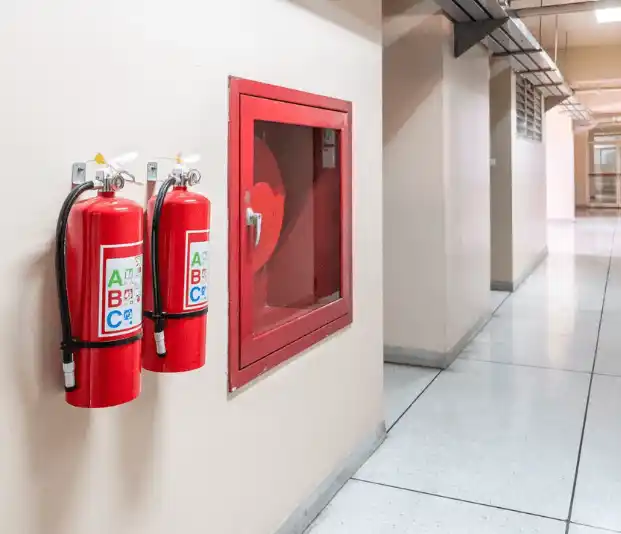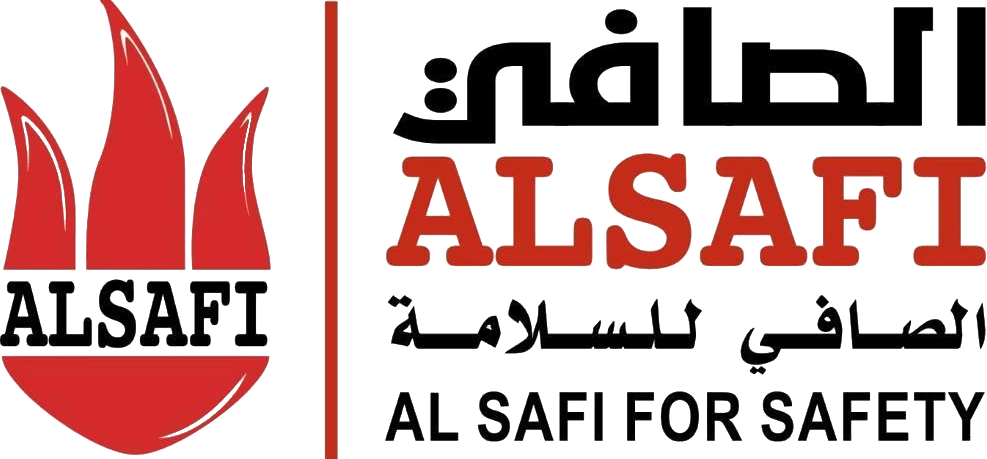Fire systems in hospitals: The necessity of protecting lives

Hospitals are critical facilities that require the highest safety standards due to the large number of occupants, including patients who may be unable to move quickly or safely during emergencies. Providing appropriate fire systems in hospitals is a cornerstone of safety plans to protect lives and property and minimize losses from fires. Hospital fire systems rely on advanced technologies designed for rapid detection and immediate response to contain fires and limit their spread.
Components of Hospital Fire Systems:
Hospital fire systems include several key components that work together to provide a high level of safety:
- Fire Detection Devices:
- Include alarm smoke and heat detectors that sense environmental changes such as temperature rise or smoke presence.
- These devices use precise sensors to detect fires at early stages, enabling swift action.
- Automatic Sprinkler Systems:
- A core part of hospital fire protection, sprinklers discharge water or other agents immediately upon fire detection.
- Patient rooms and public areas are fitted with sprinklers connected to a pressurized network that activates automatically.
- Gaseous Fire Suppression:
- Critical areas—such as IT rooms and operating theaters—use clean agent systems like CO2 or halocarbon gases.
- They suppress fire without harming sensitive medical equipment.
- Smoke Control & Ventilation:
- Systems extract smoke from occupied areas to enable safe evacuation and reduce smoke inhalation.
- Advanced ventilation helps prevent smoke migration into safe zones.
- Fire Alarm Systems:
- Audible and visual alarms alert occupants via early warning devices.
- Integrated with central control panels to help evacuation teams and Civil Defense locate the incident quickly.
- Emergency Exits & Backup Lighting:
- Exit routes are equipped with emergency lighting to guide occupants even during power loss.
Hospital Fire Protection Systems
Hospitals follow a set of fire-prevention measures to protect lives and property, including:
- Routine Maintenance:
- Periodic inspection of all fire systems to ensure effective, fault-free operation.
- Includes detectors, sprinklers, gaseous systems, and ventilation.
- Training & Awareness:
- Staff training on firefighting equipment such as extinguishers and on safe patient evacuation.
- Regular evacuation drills to simulate emergencies and address gaps.
- Compartmentation:
- Dividing the hospital into fire-resistant zones with fire-rated doors to limit spread and allow time for evacuation.
- Compliance with Safety Standards:
- Adherence to health & safety standards set by authorities to ensure adequate protection.
- Includes code-compliant design and appropriate equipment on every floor and in each required room.
How Fire Protection Systems Safeguard Patients & Staff
Fire protection systems are pivotal for life safety: they cut response time and help save lives. Because many hospital patients cannot be moved easily, these systems primarily aim to buy evacuation time and maintain smoke-free conditions as much as possible, giving emergency teams the chance to act effectively.
Smart Applications to Enhance Hospital Fire Systems
With advancing technology, hospitals increasingly deploy connected, intelligent systems using IoT and AI, such as:
- Smart Detectors:
- Sensors that detect environmental changes and send instant signals to central controls.
- Remote Monitoring:
- Platforms that supervise fire protection systems anywhere and push real-time alerts to response teams.
- Data Analytics:
- AI-driven analysis of temperature/smoke data for faster, more accurate fire detection.
Conclusion
Fire systems in hospitals are more than a legal requirement; they are essential to protect lives and reduce damage. Detection, suppression, ventilation, and alarm systems ensure fast, effective response that limits harm and gives staff time to evacuate patients safely. By following maintenance-contract routines and continuous training, hospitals can sustain a safe environment that meets the highest standards for such critical facilities.
FAQs about Hospital Fire Systems
What is the importance of fire systems in hospitals?
They are essential for protecting lives—especially patients with limited mobility—and are a core requirement for licensing medical facilities by Civil Defense and health authorities.
Is there a special system for ORs or ICUs?
Yes. Non-conductive clean agents such as FM-200 are used to protect sensitive medical devices without affecting patients.
Who is responsible for installing hospital fire systems?
Al-Safi, a Civil-Defense-approved contractor, in coordination with an Al-Safi-approved engineering office, designs and installs systems in compliance with applicable standards.
Do hospitals require periodic maintenance of fire systems?
Absolutely. Monthly and annual inspections and servicing of all alarm and suppression systems are required to ensure full readiness.



